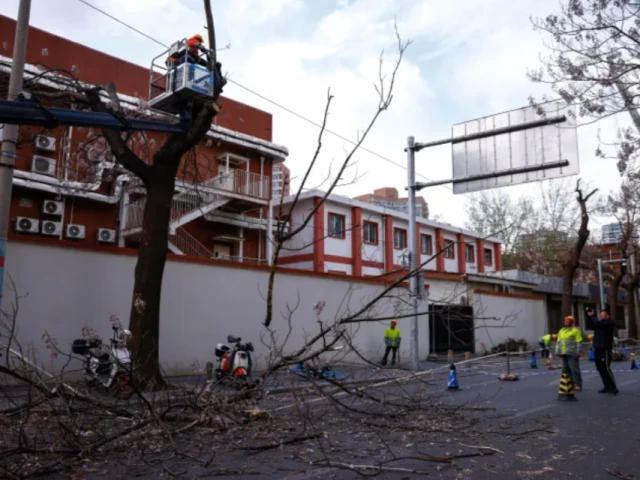Flights canceled, millions ordered to stay indoors as severe winds batter China
Cold vortex from Mongolia brings record-breaking winds to Beijing, toppling trees and crushing vehicles; avoid travel

Hundreds of flights were grounded, parks closed, and millions urged to stay indoors as strong winds swept across northern China, with Beijing issuing its second-highest gale alert for the first time in a decade.
Driven by a cold vortex from neighbouring Mongolia, gusts toppled trees and crushed vehicles across the capital, prompting authorities to warn the city's 22 million residents to avoid non-essential travel. Meteorologists warned that wind speeds could break April records dating back to 1951.
As of Saturday afternoon, Beijing Capital and Daxing international airports had cancelled 693 flights. Severe weather conditions also impacted other regions, leading to further flight and train cancellations nationwide.
In parts of northern and coastal China, wind speeds reached up to 148 km/h (92 mph)—the strongest recorded in over 75 years. The extreme weather also brought rare April snowfalls in Inner Mongolia and hailstorms in the south.
In Beijing, iconic landmarks such as the Forbidden City, Summer Palace, and Temple of Heaven were closed to the public, while Universal Studios suspended operations until at least Sunday. Outdoor sporting events, including football matches and a high-profile half-marathon featuring humanoid robots, were also cancelled.
Online, residents expressed concern for delivery workers operating in the treacherous conditions. “In weather like this, we can choose not to order delivery – it’s too hard for them,” one user wrote on Weibo.
Meanwhile, sandstorms stretching from Inner Mongolia to the Yangtze River region disrupted road travel in at least eight provinces, with state media warning Shanghai would also be affected between Saturday afternoon and Sunday morning.
China’s dry northern regions, flanked by the Gobi and Taklamakan deserts, are particularly prone to high winds and sandstorms due to their arid landscapes, surrounded by grasslands, mountains, and forests.
Authorities continue to monitor the weather system, with warnings of further disruption as the cold front moves eastward.























COMMENTS
Comments are moderated and generally will be posted if they are on-topic and not abusive.
For more information, please see our Comments FAQ